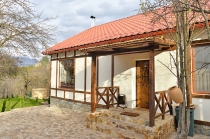
Marriott Tsaghkadzor
The hotel complex "Marriott Tsaghkadzor" offers a comfortable stay in the fresh air of Tsaghkadzor,...
Golden Palace Resort
"Golden Palace Resort-Spa" is the only officially recognized 5-star hotel in Tsakhkadzor, in...
Elegant
Elegant" hotel has stylish rooms where the guests can enjoy picturesque view of mountains and...
Villa Jrhogher
"Villa Jrhogher" is situated in the heart of Dilijan’s forests and is a perfect choice for a small group of friends, colleagues or family members to host up to 10 guests. Free private parking...Australia
.jpg&width=389&height=248)
| Capital | Canberra |
| Area | 7 692 024 km² |
| Population | 20 million people |
| Official language | English |
| Currency | Australian Dollar (AUD) |
| Climate | summer +12°C winter +22°C |
| Recommended type of holiday | sightseeing |
About country
The first inhabitants of Australia were the Aborigines, who migrated there at least 40,000 years ago from Southeast Asia. There may have been between a half million to a full million Aborigines at the time of European settlement; today about 350,000 live in Australia.
Dutch, Portuguese, and Spanish ships sighted Australia in the 17th century; the Dutch landed at the Gulf of Carpentaria in 1606. In 1616 the territory became known as New Holland. The British arrived in 1688, but it was not until Captain James Cook's voyage in 1770 that Great Britain claimed possession of the vast island, calling it New South Wales. A British penal colony was set up at Port Jackson (what is now Sydney) in 1788, and about 161,000 transported English convicts were settled there until the system was suspended in 1839.
The continent of Australia, with the island state of Tasmania, is approximately equal in area to the United States (excluding Alaska and Hawaii). Mountain ranges run from north to south along the east coast, reaching their highest point in Mount Kosciusko (7,308 ft; 2,228 m). The western half of the continent is occupied by a desert plateau that rises into barren, rolling hills near the west coast. The Great Barrier Reef, extending about 1,245 mi (2,000 km), lies along the northeast coast. The island of Tasmania (26,178 sq mi; 67,800 sq km) is off the southeast coast.
New Zealand
.jpg&width=&height=)
| Capital | Wellington |
| Area | 268 680 km² |
| Population | 4 270 000 people |
| Official language | English and Maori |
| Currency | New Zealand Dollar |
| Climate | summer +10°C winter +30°C |
| Recommended type of holiday | sightseeing |
About country
There’s a reason the sun shines on New Zealand before anywhere else – every new day in Aotearoa is something to cherish! Small, remote and thinly populated, yes, but NZ punches well above its weight with its outlandish scenery, fabulous festivals, superb food and wine, and magical outdoor experiences. Equally impressive is NZ’s potent, mainstream Maori culture. This is a country that recognises and celebrates its indigenous people – the world is a kinder, gentler, more respectful place down here! And while the fanfare surrounding the Lord of the Rings trilogy is waning, visiting the real-life Middle-earth still has a geeky allure - LOTR director Peter Jackson's filmmaking prowess still holds Wellington (aka ‘Wellywood’) in its thrall.
On the broader arts front, Kiwi live music remains brilliant (dub, hip-hop, reggae and rock), while NZ radio remains abysmal. Culturally, debate rages between anti- and pro-arts lobbies: one side would rather chew their arms off than see another art gallery open; the other sees cultural celebration as the future for both community and tourism. How does NZ forge its cultural identity? What role do the arts play? Do cultural attractions lure the tourists? From our perspective, they most certainly do!
Papua New Guinea
.jpg&width=&height=)
| Capital | Port Moresby |
| Area | 462 840 km² |
| Population | 6 888 000 people |
| Official language | English |
| Currency | Kina |
| Climate | from October to April +30°C from March to September +28°C |
| Recommended type of holiday | sightseeing |


